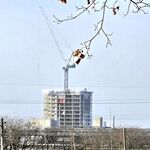micheal_can
Senior Member
It is called free enterprise, it is the economic system on which Canada and the Global economy runs. At the heart of that economy is Aviation, so no worries on finding investors.
The likelihood of this airport being funded entirely by private investment is about the same as Mexico paying for Trump's border wall...
There has already been one completely privately funded proposal, an industrial airport back in 2011. I still have the business case, it was a solid 8% return. at the time transport decided a bigger airport was the way forward. All we need is an RFP, and we get to findout.
8%? No wonder it didn't fly. Most businesses need a 10-20% return in order to consider something.
They proved on their own there is not a strong case for it. When will you agree?




